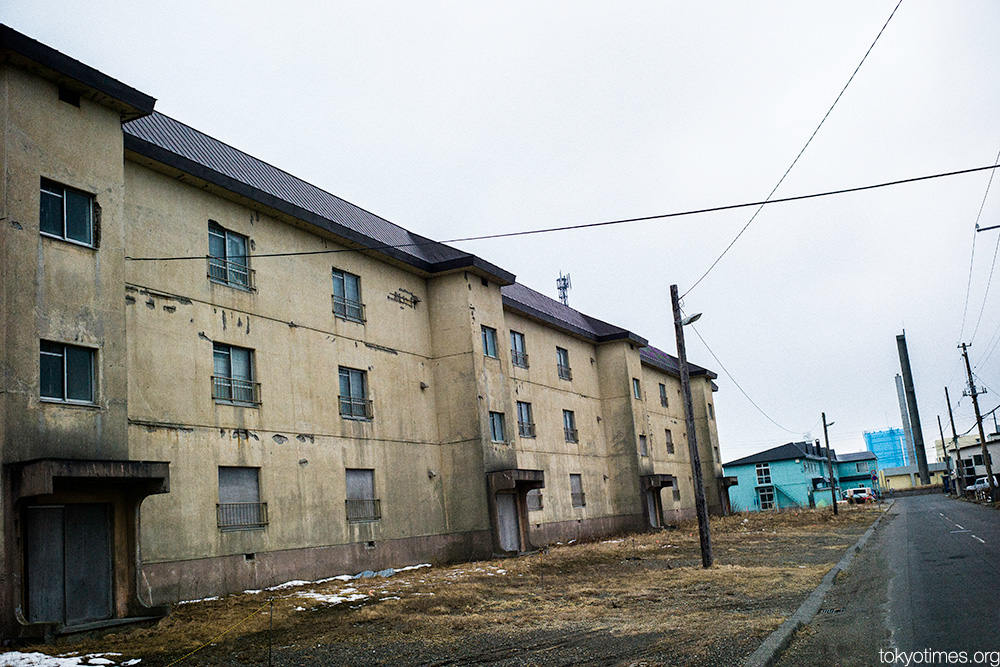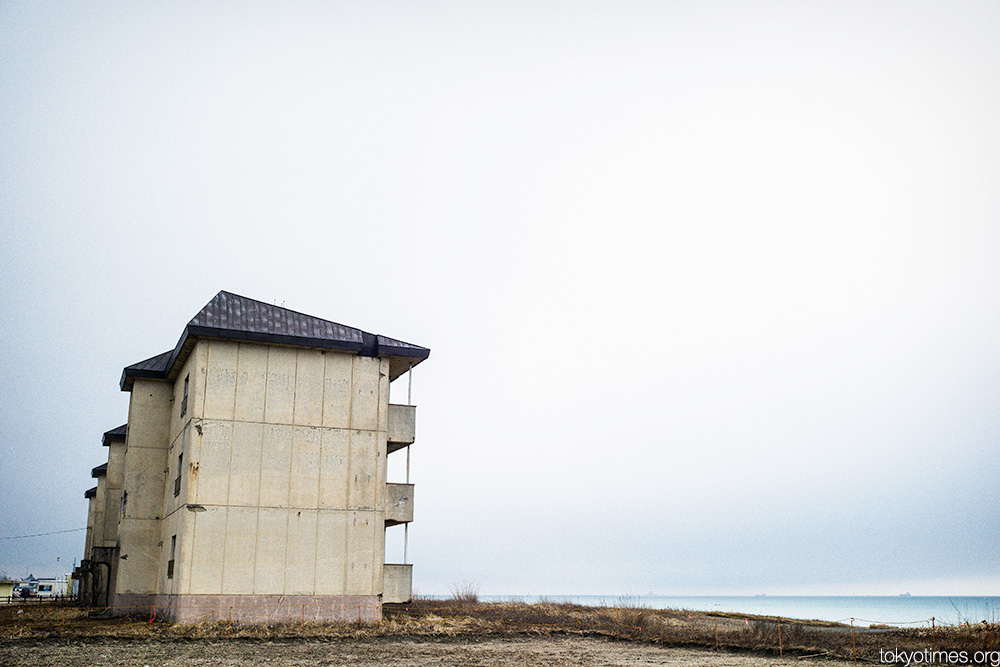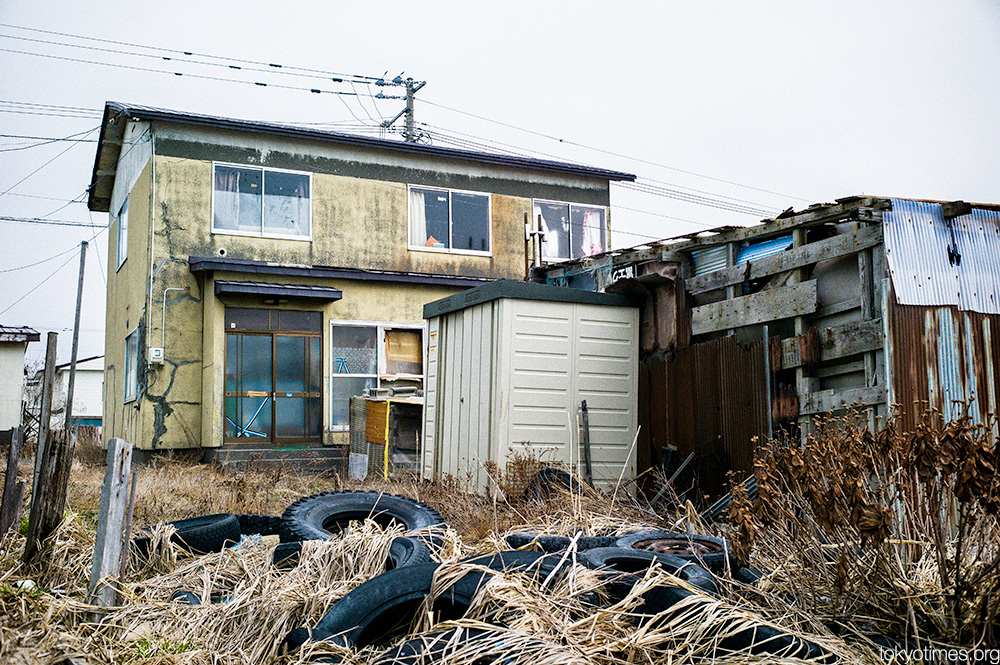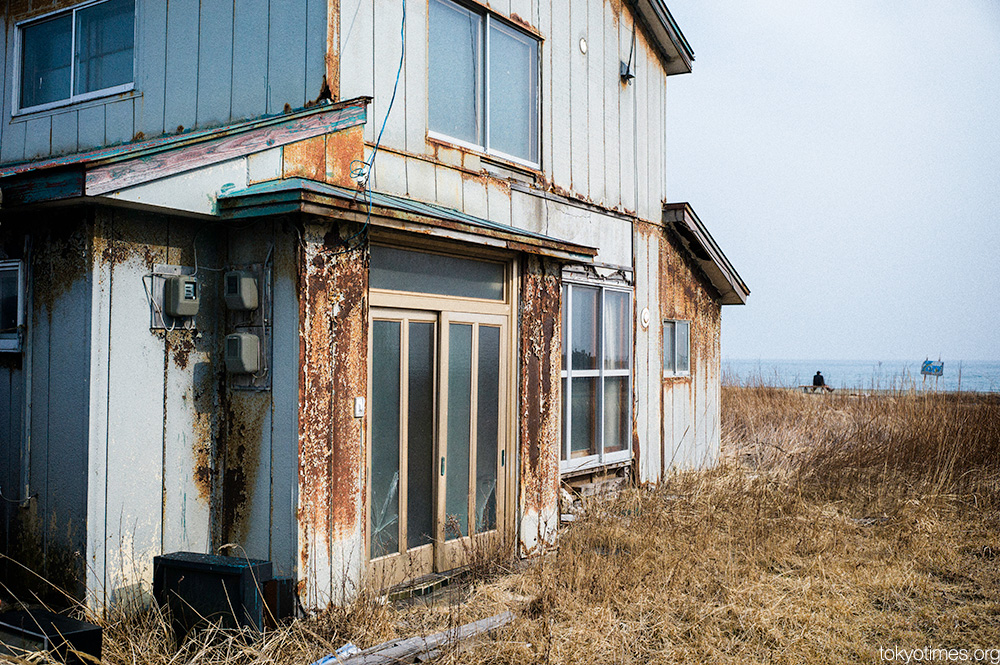Hokkaido, Japan’s northernmost prefecture, is quite rightly famous for its beautiful mountains, caldera lakes and rolling hills. Natural splendours that are a huge draw for skiers in winter, and sightseers of all ages in the mercifully more temperate summer.
But that’s not the whole picture. For starters, there’s a fair bit of heavy industry, which offers a decidedly stark contrast to the tourist attracting scenery. Plus the population shift to the big cities that is having a huge impact on Japan as a whole, is arguably even more pronounced in parts of Hokkaido — with previously documented towns like Muroran suffering enormously. And to make matters worse, these factors are further exacerbated by employment limitations and an ageing population, creating a very different side to the region indeed. One that’s much more bleak, than beautiful.

A situation that’s especially true by the sea, resulting in long stretches of coastline that have been battered by both the weather and socioeconomic forces. Leaving an oddly quiet.


Incredibly forlorn looking landscape.



Where the harshness of the region’s bitterly cold winters are all too easy to imagine.


Although despite the obvious hardship, on a very early spring day when these photographs were taken, there were hints of what pleasures summer may bring.

Or if not pleasure, then at least something of a reprieve.

Martin says
Excellent photos. They really tell me that I would not want to be there.
Lee says
Thank you.
Yes. It was an interesting place to visit, but it must be a desperately tough place to live. Heaven knows how cold those patched up homes must be…
Al says
Sad but interesting shots. So different from Tokyo. How cold was it when you shot them? This houses don’t look prepared for winter in any region! 🙁
Lee says
We got very lucky. The week before it was minus figures with snow and strong winds, but it changed for the better the day before we left. Still cold in the mornings and much more so at night, but on days when the sun was out it was really quite pleasant.
Yeah, in Tokyo those houses would be freezing. But up in Hokkaido it doesn’t bear thinking about.
Martin B says
Quite a contrast to the bright, shiny, almost sterile look of parts of Tokyo, the feel of grit and grime is almost tangible.
Given a choice of the two I’d be more tempted to live here, I don’t care if it’s brass monkeys cold in winter and stifling hot in summer, at least this place looks like it has some character, even if it is a bit rough at the edges.
Lee says
Definitely has character. The summer’s are relatively cool too, with nothing like the humidity of Tokyo.
But you are a tougher man than me. I’d need a completely insulated and well heated house to even contemplate living there in winter. In summer though I’d be there at the drop of a hat.
Matt Talbot says
I’m constantly astounded that, for all their technology and futuristic abilities, the Japanese continue to build homes with all the insulating properties of a teabag.
As ever though Lee, your photos are brilliant. Some are positively Soviet in their bleakness.
Lee says
Thank you very much. And yeah, a lot of it did have a soviet feel. An odd experience at times to walk around.
That’s a great way of describing Japan’s approach to insulation! Sadly all too true as well. I’d always imagined that houses in Hokkaido were very different from those in and around Tokyo. Came as a real shock to see places like this. Honestly, how those people in the wooden houses in particular survive those long winters I really don’t know…
Jeffrey says
Good lord! Who thought it was a good idea to build a danshi right at the shoreline? Must have been miserable to live there in the winter.
Lee says
I know…
The one with the Coca Cola machine was very similar, only that one was still lived in. It was in a lot worse condition too…
Squidpuppy says
Almost like a post-human world (except for one guy – the last man on Earth?). That toppled over vending machine is such an image of flat-out dead, especially in Japan, it made me laugh. In this bleak landscape, even our machines have given up the ghost.
Lee says
That’s so true. In vending machine loving Japan, if they are defunt then we are surely doomed!
In all honesty, and despite all the tumbledown houses we saw, that vending machine was one of the most striking sights. Summed up so much about the area
AF says
Look at that, I always wanted a vending machine at home… Say, were there many young women on the streets? At far away places like mining and industrial towns sometimes there is a high concentration of male population (more than women), occasionally many old people.
.
By the way, I like the vast spaces of Hokkaido whenever I see such pictures. If I were a tourist I would pick both a hot place in Japan (like the southern islands in Okinawa) and a cold one like Hokkaido to visit and have contrast. Also the shores of Japan are full of hills, green scenery and mountains and seem to be very attractive to travel along the pacific coast from south to north…
.
I use to visit to blogs about this island, Hokkaido Kudasai and Talk Hokkaido. Do you have any suggestions on sites to see more pictures/photos from Hokkaido?
Lee says
No. In fact there weren’t many people at all. On the streets there was the one man in the last photo, a couple of other men and old woman. That was it. Unusually quiet.
Hokkaido is a great place to visit. Visually very interesting, and the people are lovely too. Really open and friendly. As for other photos of Hokkaido, I don’t have any recommendations I’m afraid, but with it being such a popular tourist destination, there are plenty of pictures out there.
AF says
I see, thank you for the feedback!
David Lowe says
Lee, based on merely the photographs alone I’d imagine many would hazard a guess you’ve stumbled upon a grim and likely abandoned Russian industrial town. A fascinating depiction of a town who’s heyday if there ever was one, now a distant memory for the few remaining stalwarts who remain.
Lee says
Definitely. That’s what it felt like too. A fascinating but very odd place to explore.
Yes, a heyday is probably too much, but it has clearly had better days. Surprisingly, a good few people must still live there too, as most of the places were still lived in. Even ones we thought couldn’t still be inhabited were. Dogs in kennels and the electricity meters whizzing round giving their occupants away, even though we saw very few people out and about.
Hans ter Horst says
Wow, we’re not in Kansas any more….. That last photo with the dude on the bench, amazing photo with which to close the essay!
Lee says
No, not by any stretch of the imagination…
Thanks a lot! That one summed up the area in many ways for me, so it seemed like the perfect shot to finish on.
LAObserver says
Looking at these buildings right at sea level makes me wonder about your future photographs if/when sea levels rise. A popular documentary approach using photography is to repeat the same shot at the same location in the future.